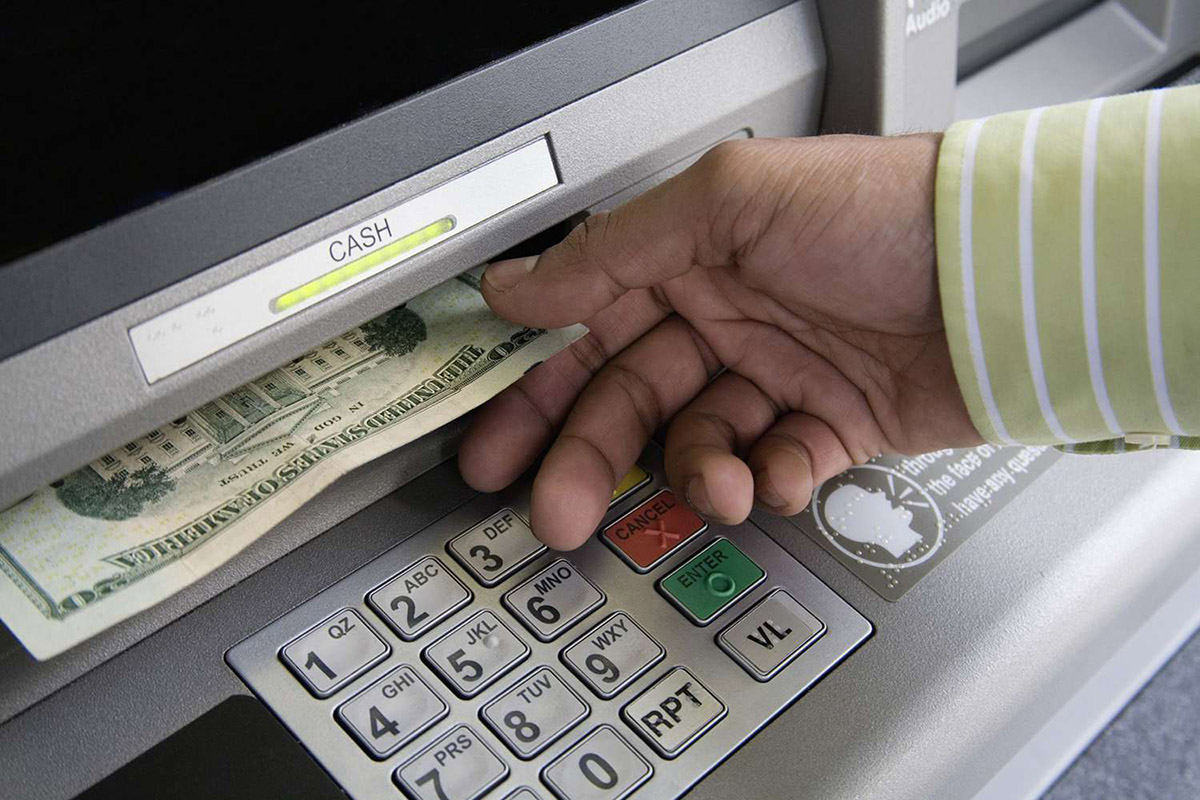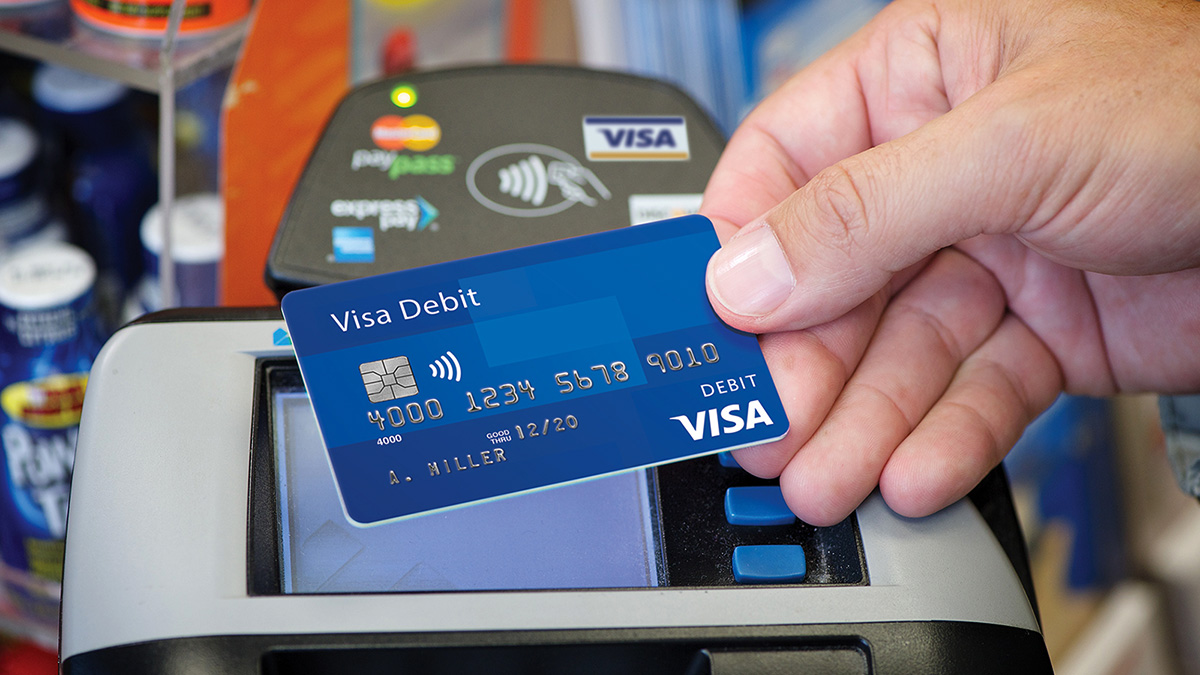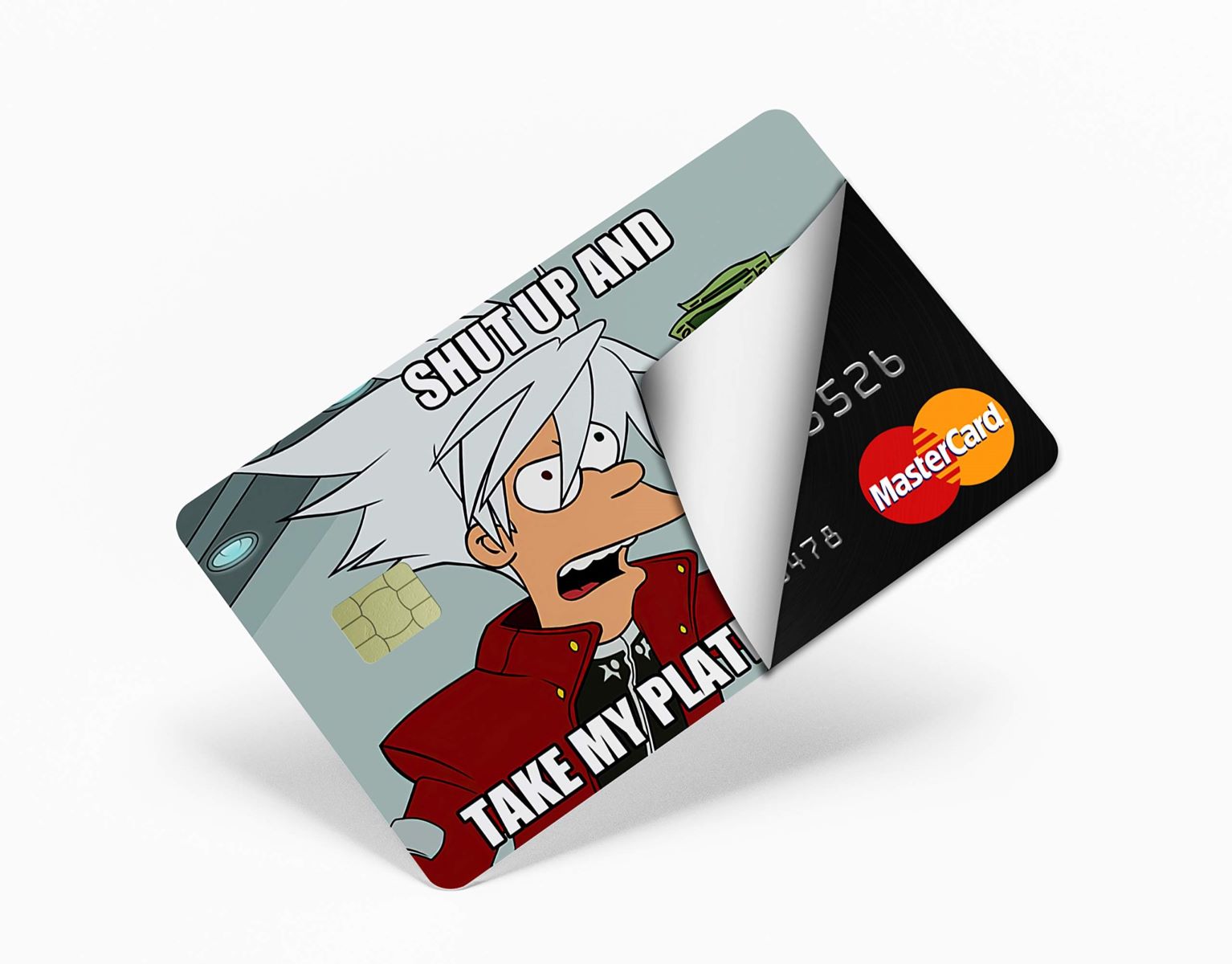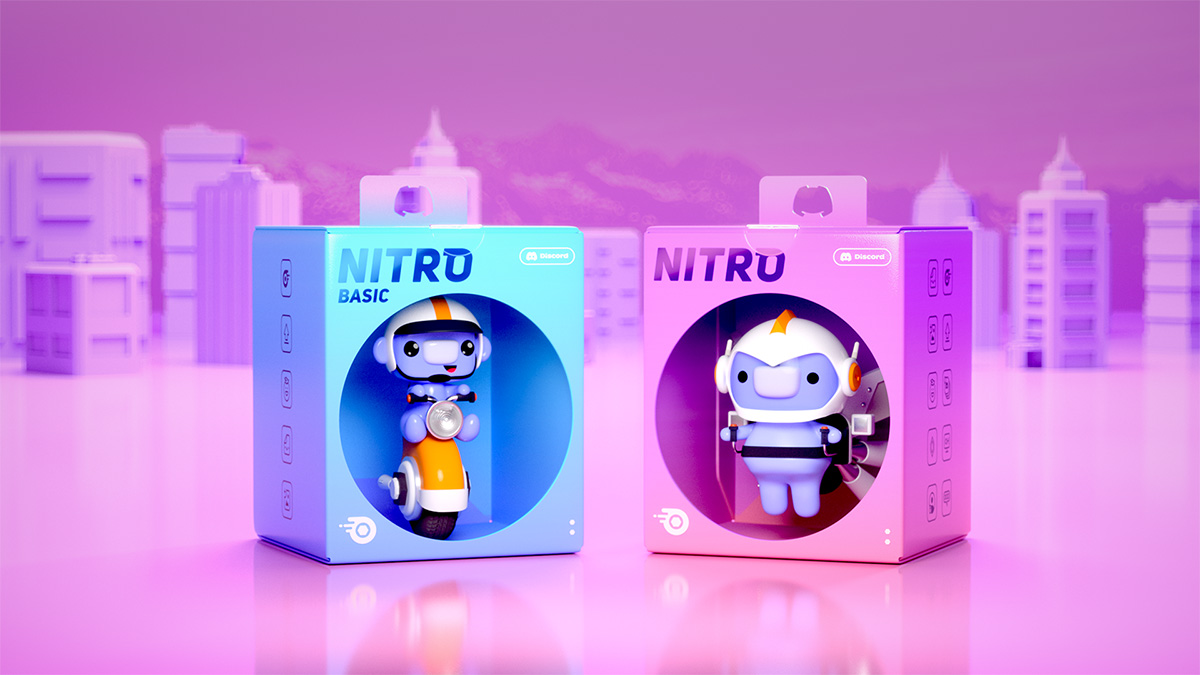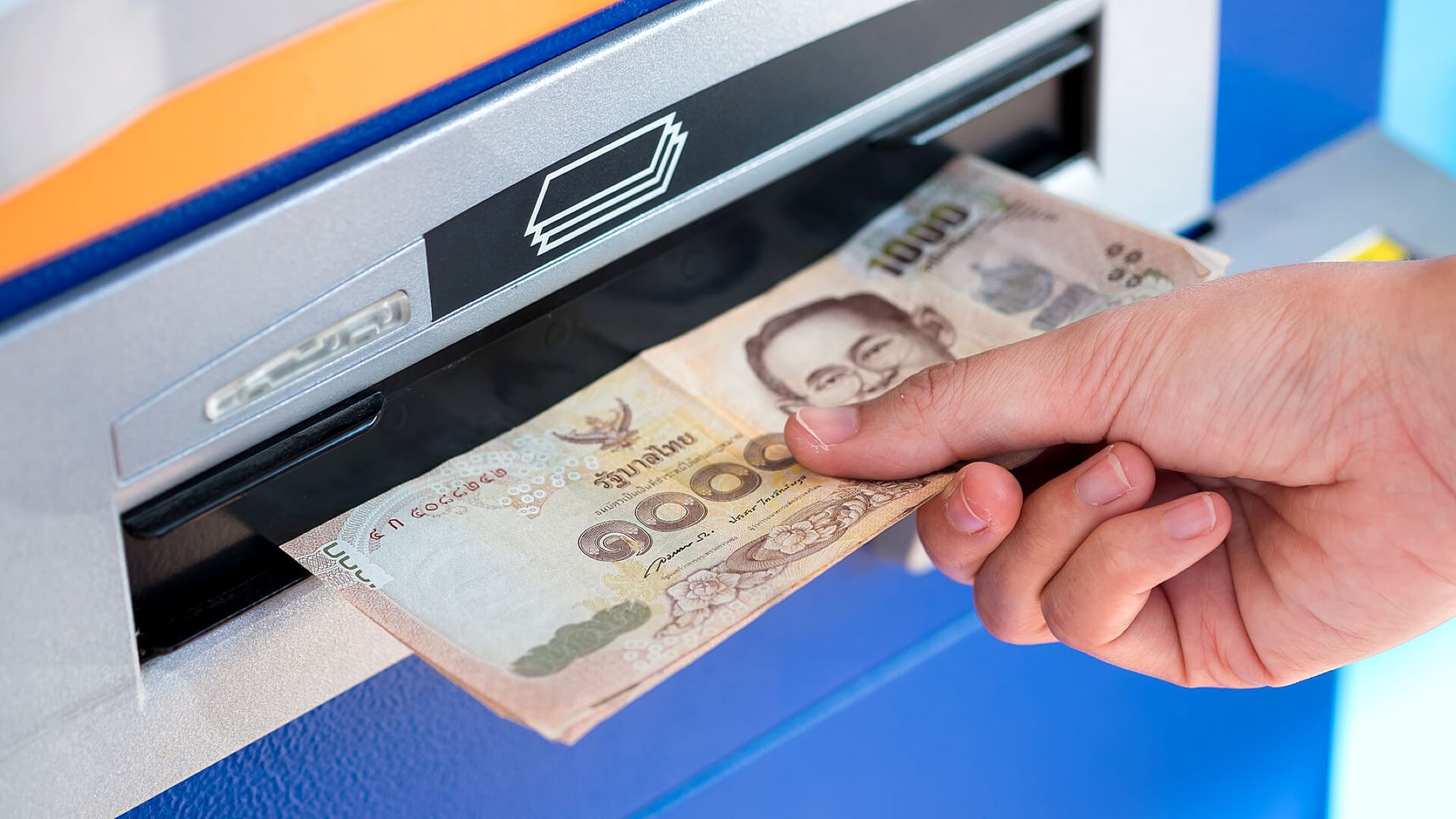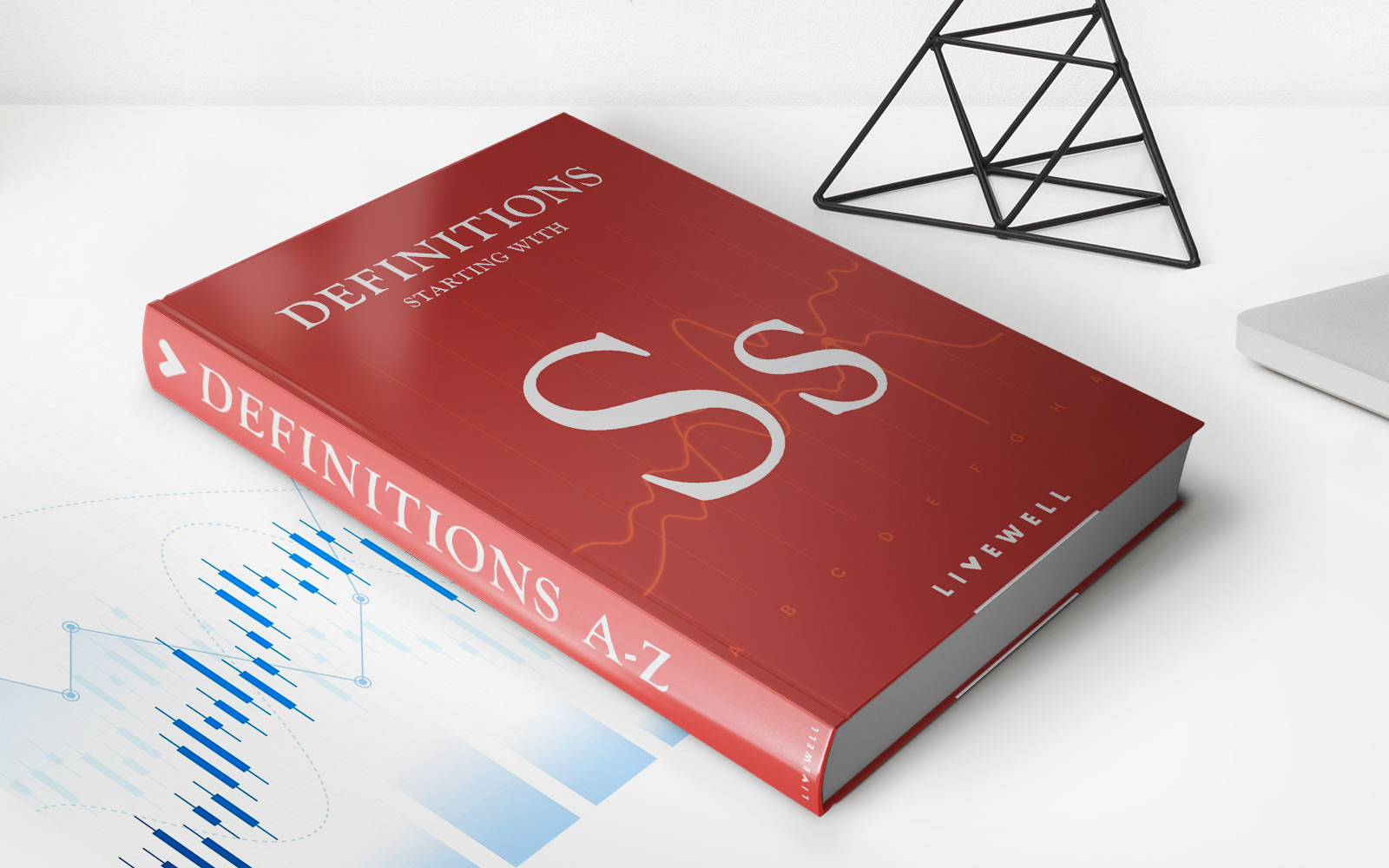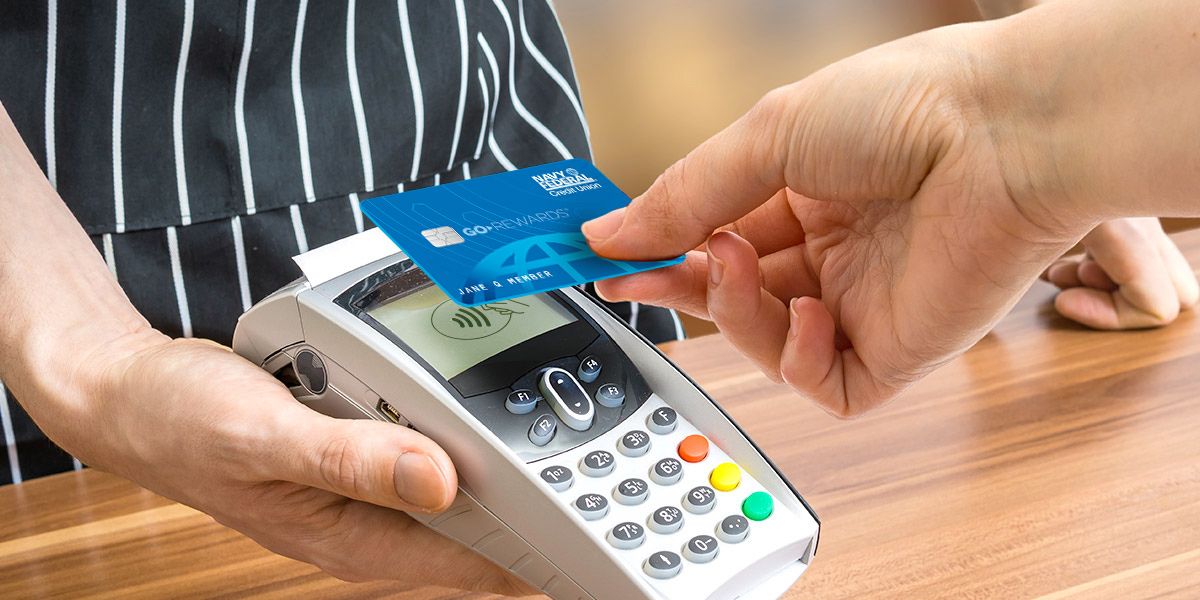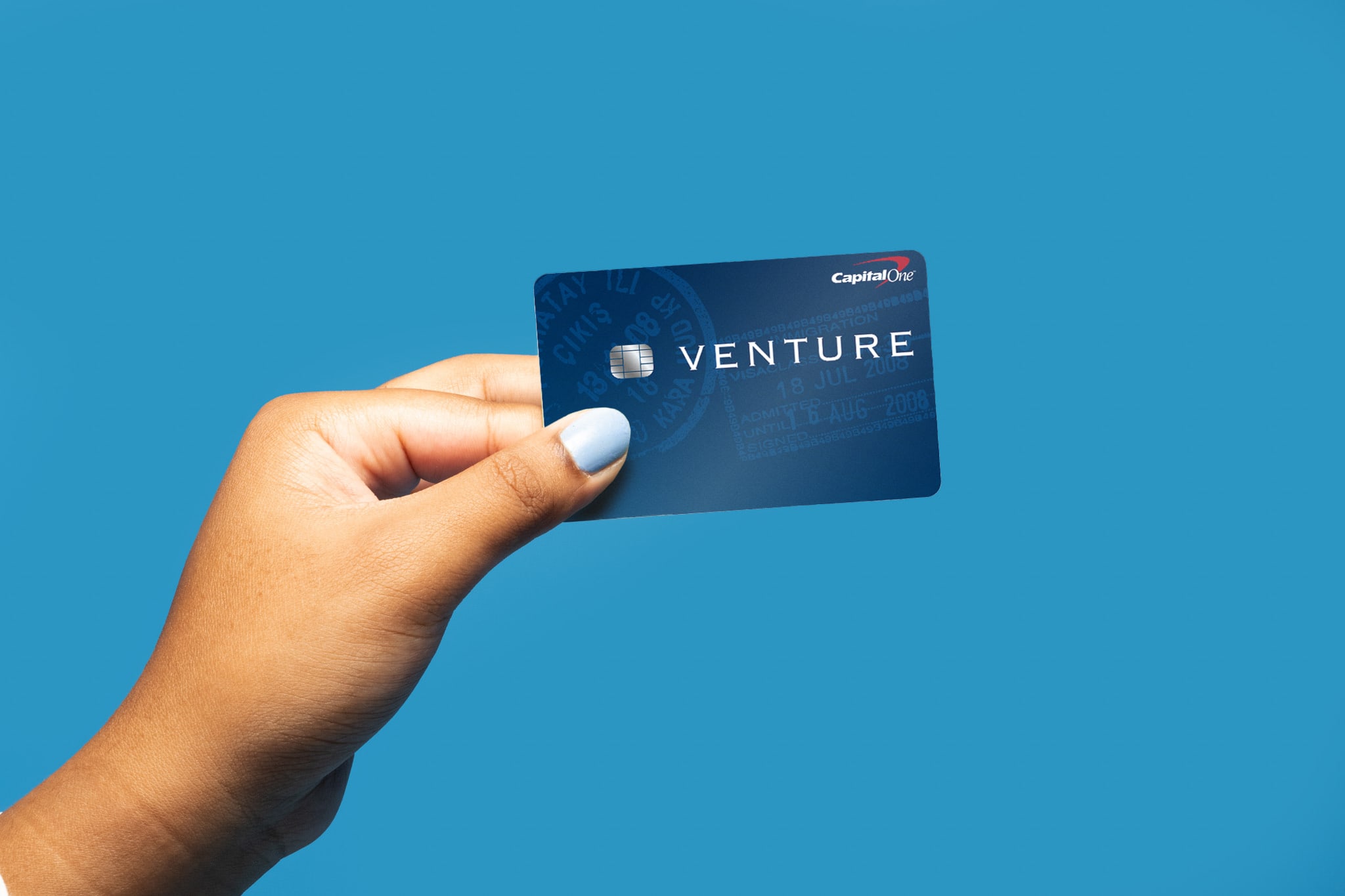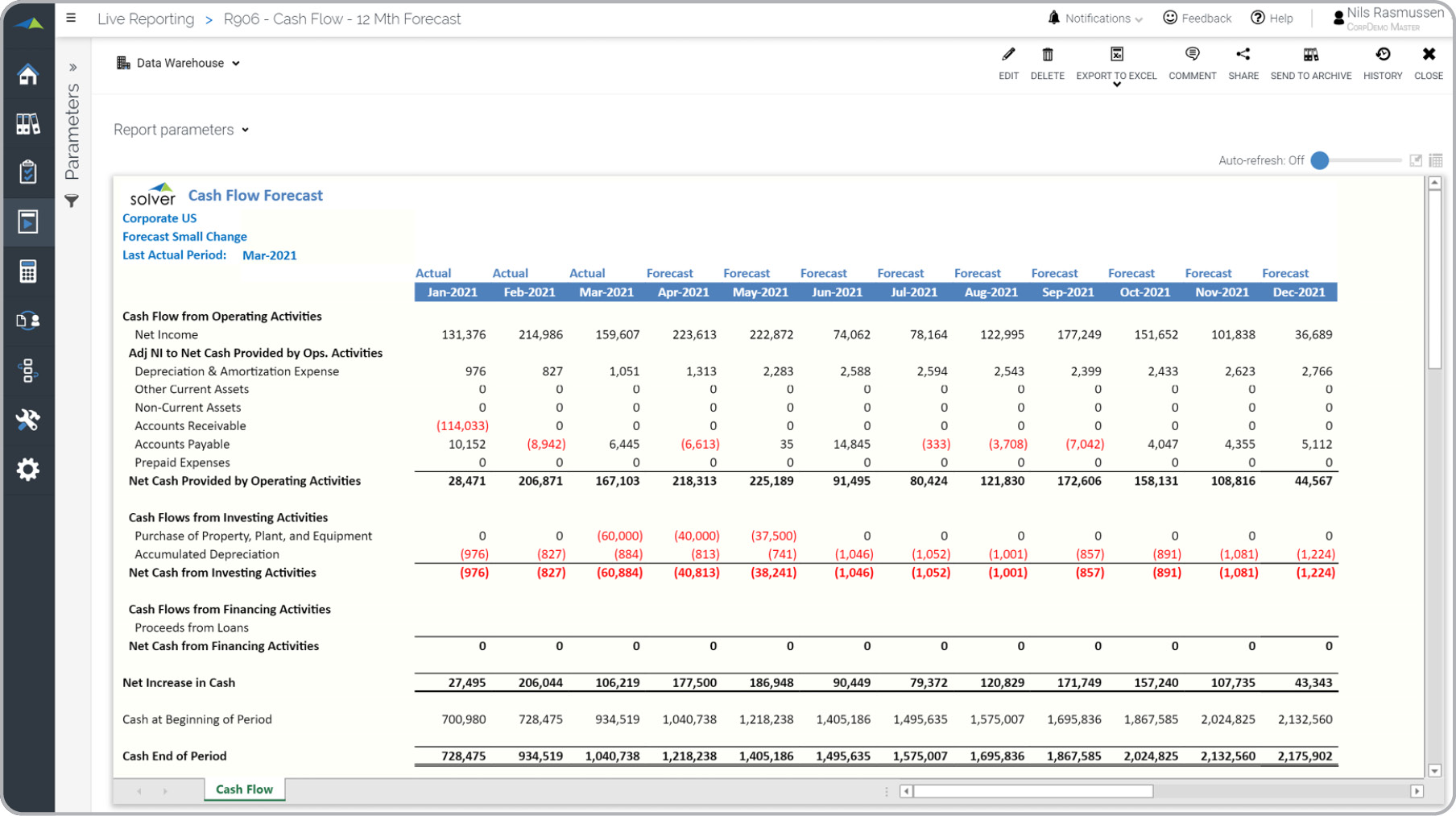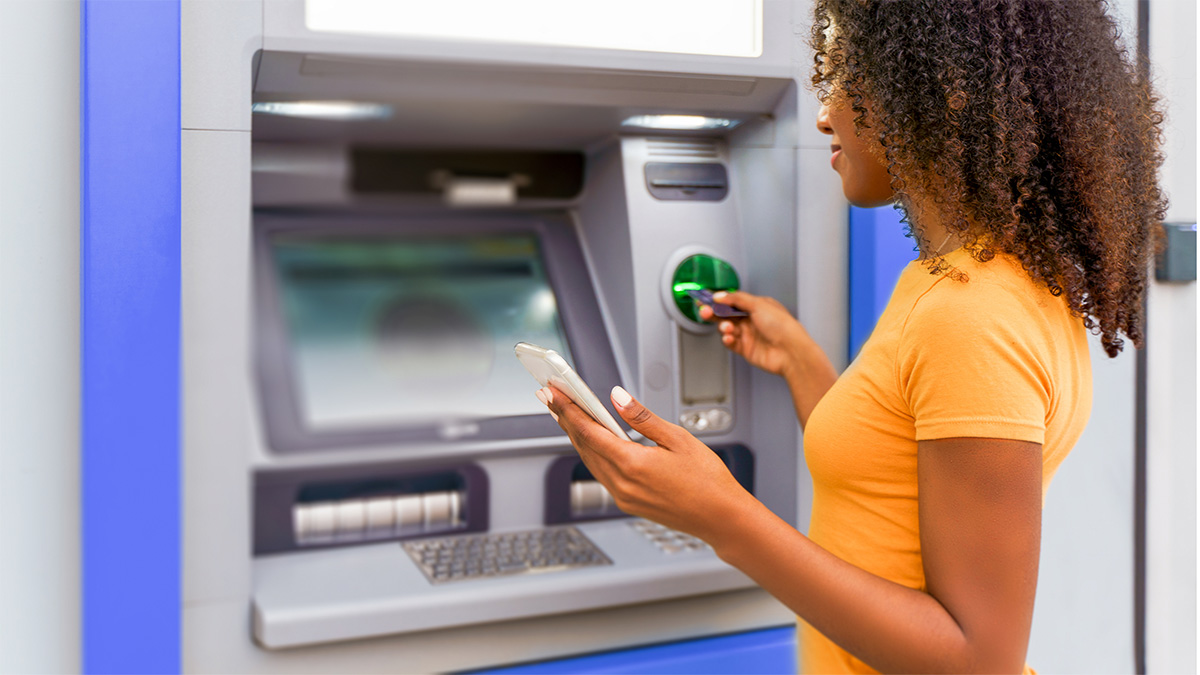

Finance
How To Get Cash Off Credit Card Without Pin
Published: November 11, 2023
Learn how to get cash off your credit card without a PIN. Discover the smart finance hacks to access cash quickly.
(Many of the links in this article redirect to a specific reviewed product. Your purchase of these products through affiliate links helps to generate commission for LiveWell, at no extra cost. Learn more)
Table of Contents
- Introduction
- Understanding Cash Advances on Credit Cards
- Methods to Get Cash off Credit Card without a PIN
- Option 1: Over-the-Counter Cash Withdrawal
- Option 2: Cash Advances from Banks or ATMs
- Option 3: Balance Transfer to Another Account
- Option 4: Purchase Cashback
- Option 5: Peer-to-Peer Cash Exchange
- Option 6: Utilizing Mobile Payment Apps
- Option 7: Online Shopping Cashbacks
- Option 8: Utilizing Convenience Checks
- Factors to Consider Before Getting Cash off Credit Cards
- Conclusion
Introduction
When faced with a financial emergency or in need of quick cash, credit cards can be a lifeline. However, accessing cash from a credit card without a PIN can seem like a daunting task. Fortunately, there are several methods available that can help you obtain cash from your credit card even if you don’t have a PIN. In this article, we will explore various options to get cash off a credit card without a PIN, providing you with the necessary information to make an informed decision.
Before we delve into the methods, it’s important to understand the concept of cash advances on credit cards. A cash advance is essentially borrowing money from your credit card issuer, which is then charged to your credit card account. This allows you to access cash or make payments where credit cards are not accepted.
While getting cash off a credit card without a PIN may seem convenient, it’s crucial to keep in mind that cash advances typically come with high-interest rates and additional fees. It is essential to carefully consider the implications of accessing cash through these methods and explore alternative options before proceeding.
Now, let’s explore the different methods you can use to get cash off your credit card without a PIN.
Understanding Cash Advances on Credit Cards
Before delving into the methods of obtaining cash from your credit card without a PIN, it is important to have a clear understanding of how cash advances work. A cash advance is a service provided by credit card issuers that allows cardholders to withdraw cash from their credit card accounts. However, this convenience comes at a cost, as cash advances typically have higher interest rates and fees compared to regular credit card transactions.
When you make a cash advance, you are essentially borrowing money against your credit limit. The amount you can borrow is usually limited to a certain percentage of your available credit limit, and it may vary depending on your credit card issuer and your creditworthiness. It is important to note that cash advances do not have a grace period like regular credit card purchases. Interest starts accruing immediately, meaning that you will be charged interest from the moment you make the cash advance.
Additionally, most credit card issuers charge a cash advance fee, which is typically a percentage of the amount withdrawn or a flat fee, whichever is higher. This fee can range from 2% to 5% of the total cash advance amount. It is crucial to check your credit card terms and conditions to understand the specific fees associated with cash advances.
It is also important to note that cash advances may have a separate interest rate from your regular credit card purchases. This means that even if you have a low or 0% APR on purchases, the interest rate on cash advances may be significantly higher, often ranging from 25% to 30% APR or even higher. It is crucial to carefully read the terms and conditions of your credit card agreement to understand the interest rates and fees associated with cash advances.
Now that we have covered the basics of cash advances on credit cards, let’s explore the various methods you can use to obtain cash from your credit card without a PIN.
Methods to Get Cash off Credit Card without a PIN
Even if you don’t have a Personal Identification Number (PIN) for your credit card, there are several methods you can use to get cash off your credit card. Here are some options to consider:
- Over-the-Counter Cash Withdrawal: Some banks and credit unions allow cardholders to withdraw cash over the counter at a branch. You will need to provide identification and your credit card to complete the transaction. Keep in mind that this method may come with transaction fees, so it’s recommended to check with your bank beforehand.
- Cash Advances from Banks or ATMs: If you have a major credit card, you can visit the bank that issued your card or use an ATM that supports cash advances. Insert your card, select the cash advance option, and follow the prompts. It’s important to note that this method may come with transaction fees, ATM fees, and potentially higher interest rates compared to regular credit card transactions.
- Balance Transfer to Another Account: If you have another credit card or a checking account, you may be able to transfer funds from your credit card to the other account. This can be done through a balance transfer process, which typically incurs a balance transfer fee. Keep in mind that this method may have limitations and fees, so it’s essential to check with your credit card issuer or bank to understand the terms and conditions.
- Purchase Cashback: Some merchants offer the option to receive cashback when making a purchase with a credit card. This allows you to get cash while making a necessary purchase. Keep in mind that this option may have restrictions, such as a maximum cashback amount or a requirement to make a minimum purchase.
- Peer-to-Peer Cash Exchange: Platforms such as Venmo, PayPal, or Cash App allow you to send and receive money with friends or family. If someone you know has a PayPal or other payment app account, they may be able to send you money, which you can then withdraw as cash through the app or transfer to your bank account.
- Utilizing Mobile Payment Apps: Certain mobile payment apps, like Apple Pay or Google Wallet, offer the option to load funds onto the app through your credit card and then withdraw them as cash at participating retailers or ATMs that support mobile payments. Be aware that there may be transaction fees or limitations associated with this method.
- Online Shopping Cashbacks: Cashback websites or apps offer the opportunity to earn cashback on online purchases made through their platforms. By using your credit card to make purchases through these channels, you can earn cashback that can be credited to your bank account or withdrawn as cash.
- Utilizing Convenience Checks: Some credit card companies provide convenience checks to cardholders, which can be used to make purchases or access cash. These checks work similarly to regular checks and can be filled out to a specific payee or cashed at a bank or other financial institution.
It is important to carefully weigh the pros and cons of each method and consider any associated fees, interest rates, and limitations. Additionally, be sure to check with your credit card issuer or bank to understand their specific policies and terms regarding these methods. It’s always wise to proceed with caution when accessing cash from your credit card, as it can incur high costs and impact your credit utilization ratio if not managed responsibly.
Now that we have explored the various methods to get cash off a credit card without a PIN, let’s consider some important factors to keep in mind before proceeding with any of these options.
Option 1: Over-the-Counter Cash Withdrawal
One of the methods to get cash off your credit card without a PIN is through an over-the-counter cash withdrawal. This option allows you to visit a bank or credit union branch and withdraw cash from your credit card account.
To perform an over-the-counter cash withdrawal, you will typically need to provide identification, such as a government-issued ID or passport, along with your credit card. The bank or credit union representative will then process the transaction and give you the requested amount in cash.
While this method can be convenient, it’s important to note that it may come with certain limitations and fees. Some banks charge a transaction fee for over-the-counter cash withdrawals, which can range from a flat fee to a percentage of the total amount withdrawn. It is advisable to check with your bank beforehand to understand the associated fees.
Additionally, it’s crucial to consider the interest rate that will be applied to the cash withdrawal. Cash advances on credit cards often have higher interest rates compared to regular credit card transactions. Interest may begin accruing immediately, meaning that you will start incurring interest charges from the moment you withdraw the cash.
Before proceeding with an over-the-counter cash withdrawal, it’s important to evaluate whether this method aligns with your financial needs and goals. Consider the following questions:
- Is the convenience of acquiring cash through an over-the-counter withdrawal worth the potential fees and higher interest rates?
- Do you have a planned budget or repayment strategy for the cash borrowed?
- Are there alternative methods available that offer more favorable terms, such as lower fees or interest rates?
By considering these factors, you can make an informed decision about whether an over-the-counter cash withdrawal is the right option for your financial situation. Remember to carefully review the terms and conditions of your credit card agreement and consult with your bank or credit card issuer to gain a clear understanding of the associated fees and implications of this method.
Now that we have examined over-the-counter cash withdrawals, let’s explore another potential method: cash advances from banks or ATMs.
Option 2: Cash Advances from Banks or ATMs
If you need cash from your credit card without a PIN, another option to consider is obtaining a cash advance from a bank or ATM. This method allows you to withdraw cash directly from your credit card account using your credit card at a bank or ATM that supports cash advances.
To initiate a cash advance from a bank or ATM, you will typically need to insert your credit card into the machine and select the cash advance option. Follow the prompts on the screen to input the desired amount to withdraw. Keep in mind that there may be daily limits on how much you can withdraw as a cash advance.
While cash advances from banks or ATMs can provide quick access to cash, it’s important to understand that this convenience comes with certain fees and considerations. Most credit card issuers charge a cash advance fee, which can be either a percentage of the total amount advanced or a flat fee, whichever is higher. This fee can range from 2% to 5% of the cash advance amount. Additionally, some ATMs may charge an additional fee for processing the cash advance transaction.
Furthermore, cash advances usually have higher interest rates compared to regular credit card transactions. Interest begins to accrue immediately on the amount withdrawn, meaning you will start accumulating interest charges from the moment you make the cash advance. It is advisable to carefully review your credit card agreement or contact your credit card issuer to understand the specific interest rates associated with cash advances.
Before opting for a cash advance from a bank or ATM, it’s important to ask yourself the following questions:
- Do I really need immediate access to cash, or are there alternative options available?
- Can I afford the potential fees and higher interest rates associated with cash advances?
- Have I considered other methods that may provide more favorable terms, like over-the-counter cash withdrawals or peer-to-peer cash exchange?
By carefully evaluating these factors, you can determine if a cash advance from a bank or ATM is the right option for your specific financial needs. Be sure to read your credit card agreement or reach out to your credit card issuer to fully understand the fees, interest rates, and terms associated with cash advances.
Now that we’ve explored cash advances from banks or ATMs, let’s move on to another potential method: balance transfer to another account.
Option 3: Balance Transfer to Another Account
If you’re looking to access cash from your credit card without a PIN, another option to consider is a balance transfer to another account. This method allows you to transfer funds from your credit card to another credit card or a checking account, providing you with cash that can be used for various purposes.
To initiate a balance transfer, you will typically need to contact the financial institution where you want to transfer the funds. They will guide you through the process and provide the necessary instructions. The funds will be transferred from your credit card to the designated account, giving you access to the cash.
While a balance transfer can provide you with cash, it’s important to note that this method may come with certain fees and limitations. Most credit card issuers charge a balance transfer fee, which is typically a percentage of the amount transferred or a flat fee, whichever is greater. It’s essential to review your credit card agreement or contact your credit card issuer to understand the specific fees associated with balance transfers.
Additionally, keep in mind that the transferred amount will be subject to the terms and conditions of the account receiving the funds. If you transfer the balance to another credit card, you may be subject to the interest rates and fees of that particular card. On the other hand, if you transfer the balance to a checking account, there may be withdrawal limits or restrictions on accessing the funds as cash.
Before opting for a balance transfer to access cash, consider the following questions:
- Does the receiving account offer favorable terms, such as lower interest rates or fees?
- Have you compared the balance transfer fees with the potential fees associated with other methods?
- Have you evaluated the impact of the transferred balance on your credit utilization ratio and credit score?
By carefully considering these factors, you can determine if a balance transfer is the right option for your specific financial needs. Be sure to gather all the necessary information and understand the terms and conditions of both your credit card and the receiving account before proceeding with a balance transfer.
Now that we’ve explored the option of balance transfer to another account, let’s move on to another potential method: purchase cashback.
Option 4: Purchase Cashback
If you’re looking to get cash off your credit card without a PIN, one option to consider is taking advantage of purchase cashback offers. Some merchants and credit card issuers provide the opportunity for cardholders to receive cashback when making purchases with their credit cards.
This method allows you to get cash while making necessary purchases, essentially combining your spending needs with accessing cash. When you make a qualifying purchase, a percentage of the purchase amount is credited back to your credit card account as cashback.
To utilize this option, you’ll need to look for merchants or credit card programs that offer cashback rewards. Many credit card issuers have specific categories that provide higher cashback percentages, such as groceries, gas, or online shopping. By strategically making purchases within these categories, you can accumulate cashback that can later be used as cash.
It’s important to note that purchase cashback may come with certain restrictions or limitations. For example, there may be a maximum cashback amount per transaction or a requirement to make a minimum purchase before becoming eligible for cashback. It’s essential to review the terms and conditions of your credit card or contact your credit card issuer to understand the specifics of the cashback program.
Before opting for purchase cashback to obtain cash, consider the following questions:
- Do you make frequent purchases within the specific categories that offer higher cashback percentages?
- Will the overall rewards earned outweigh any potential fees or costs associated with using your credit card?
- Are there other rewards or benefits attached to the credit card that align with your spending habits or financial goals?
By carefully considering these factors, you can determine if purchase cashback is a viable option for accessing cash. Be sure to review the terms and conditions of your credit card and understand the specifics of the cashback program.
Now that we’ve explored the option of purchase cashback, let’s move on to another potential method: peer-to-peer cash exchange.
Option 5: Peer-to-Peer Cash Exchange
If you’re in need of cash from your credit card without a PIN, one option to consider is peer-to-peer cash exchange. This method allows you to receive money from friends, family, or acquaintances who have the ability to send funds through platforms such as Venmo, PayPal, Cash App, or other peer-to-peer payment apps.
To utilize this option, you’ll need to have a trusted individual who is willing to send you the funds. They can initiate the transfer from their payment app account to your linked bank account, or you may also have the option to receive the funds directly into your payment app account. Once the funds are in your account, you can then withdraw the money as cash or transfer it to your bank account.
Peer-to-peer cash exchange can provide a convenient way to access cash without the need for a PIN. It eliminates the need for ATM visits or reliance on credit card issuers’ cash advance services. However, it’s important to ensure that you are transferring funds with individuals you trust, as these transactions typically involve personal connections.
While peer-to-peer payment apps themselves may not charge fees for person-to-person transfers, it’s important to review the terms and conditions of the specific platform you are using. Some platforms may charge fees for certain types of transactions or for transferring funds to a linked bank account. It’s crucial to understand any potential fees associated with the peer-to-peer cash exchange before proceeding.
Furthermore, it is important to consider the potential impact on your personal relationships when engaging in peer-to-peer cash exchange. Be transparent with the person sending you the funds about your intentions, and make sure both parties understand the terms of the transfer.
Before opting for peer-to-peer cash exchange to obtain cash, consider the following questions:
- Do you have a trusted individual who can send you money through a peer-to-peer payment app?
- Are you comfortable using personal connections for financial transactions?
- Have you reviewed the terms and conditions of the payment app to understand any associated fees or limitations?
By carefully considering these factors, you can determine if peer-to-peer cash exchange is a suitable option for accessing cash from your credit card. It’s important to prioritize trust and transparency when engaging in these transactions to maintain healthy relationships.
Now that we’ve explored the option of peer-to-peer cash exchange, let’s move on to another potential method: utilizing mobile payment apps.
Option 6: Utilizing Mobile Payment Apps
If you’re looking to get cash off your credit card without a PIN, utilizing mobile payment apps can be a convenient option. With the rise of technology, mobile payment apps like Apple Pay, Google Wallet, Samsung Pay, and others have become popular and provide opportunities to access cash.
To utilize this option, you’ll need to have a compatible smartphone with the mobile payment app installed and linked to your credit card. Some apps allow you to load funds onto the app using your credit card and then withdraw the funds as cash at participating retailers or ATMs that support mobile payments.
The process may require you to select the cash withdrawal option within the mobile payment app and follow the prompts for withdrawal. Alternatively, some apps allow you to transfer the funds from the mobile payment app to your linked bank account, which can then be withdrawn as cash. It’s important to note that not all retailers or ATMs may support mobile payments or cash withdrawals, so it’s advisable to check for participating locations beforehand.
While utilizing mobile payment apps can provide a convenient way to access cash, it’s essential to consider any associated fees or limitations. Some mobile payment apps may charge transaction fees for cash withdrawals or impose minimum withdrawal amounts. Additionally, there may be limitations on the maximum amount you can withdraw in a single transaction or within a specific timeframe.
Before opting for mobile payment apps to obtain cash, consider the following questions:
- Is your smartphone compatible with the mobile payment app you wish to use?
- Are there participating retailers or ATMs near you where you can withdraw cash using the mobile payment app?
- Have you reviewed the terms and conditions of the mobile payment app to understand any fees or limitations associated with cash withdrawals?
By carefully evaluating these factors, you can determine if utilizing mobile payment apps is a suitable option for accessing cash from your credit card. It’s important to consider the convenience, associated fees, and availability of participating locations to make an informed decision.
Now that we’ve explored the option of utilizing mobile payment apps, let’s move on to another potential method: online shopping cashbacks.
Option 7: Online Shopping Cashbacks
When it comes to accessing cash from your credit card without a PIN, online shopping cashbacks offer a unique opportunity. This option allows you to earn cashback rewards when making online purchases through specific cashback websites or apps.
To utilize this option, you’ll need to sign up for a cashback program or use a cashback website or app that partners with various online retailers. These platforms provide a percentage of your purchase amount back in the form of cashback. Over time, you can accumulate cashback rewards that can be credited to your bank account or redeemed as cash.
Online shopping cashbacks provide a two-fold benefit: you can make necessary purchases while earning cashback at the same time. This can be particularly advantageous if you regularly shop online for various goods and services.
It’s important to note that online shopping cashbacks may have certain conditions or limitations. Some cashback programs require you to access the retailer’s website through the cashback platform, ensuring that your purchases are tracked for cashback rewards. Additionally, there may be exclusions or restrictions on certain purchases or specific retailers. It’s crucial to review the terms and conditions of the cashback program or contact the cashback website or app provider for clarification.
Furthermore, it’s important to consider the cashback redemption options offered by the platform. Some platforms may allow you to request a direct deposit to your bank account, while others may provide options to redeem cashback as gift cards or as statement credits on your credit card account.
Before opting for online shopping cashbacks to access cash, consider the following questions:
- Do you frequently make online purchases that qualify for cashback rewards?
- Are there specific cashback websites or apps that offer a wide range of retailers in the categories you typically shop from?
- Have you reviewed the terms and conditions of the cashback program to understand any limitations or restrictions?
By carefully evaluating these factors, you can determine if utilizing online shopping cashbacks is a suitable option for accessing cash from your credit card. Be sure to consider your shopping habits, the available cashback options, and the eligibility criteria to make the most of this method.
Now that we’ve explored the option of online shopping cashbacks, let’s move on to another potential method: utilizing convenience checks.
Option 8: Utilizing Convenience Checks
If you’re looking to get cash off your credit card without a PIN, utilizing convenience checks can be a viable option. Many credit card companies provide convenience checks to their cardholders that can be used to make purchases or access cash.
Convenience checks work similarly to regular checks and can be filled out to a specific payee or cashed at a bank or other financial institution. You can write a check to yourself and deposit it into your bank account, allowing you to access the funds as cash.
Before using convenience checks, it’s essential to review the terms and conditions of your credit card agreement. There may be fees associated with using these checks and limitations on the amount you can write a check for. Additionally, cash advances made through convenience checks may be subject to higher interest rates compared to regular credit card transactions, so it’s important to consider the potential costs.
While convenience checks provide a straightforward way to access cash, it’s important to note that they can be treated as cash advances by your credit card issuer. This means that interest will likely begin accruing immediately, and there may be additional fees involved. Understanding the implications and costs of using convenience checks is crucial to making an informed decision.
Before opting for convenience checks to obtain cash, consider the following questions:
- Have you thoroughly read and understood the terms and conditions of your credit card agreement regarding convenience checks?
- Do the benefits of utilizing convenience checks outweigh the potential fees and higher interest rates?
- Are there alternative methods available that may offer more favorable terms, such as lower fees or interest rates?
By carefully considering these factors, you can determine if utilizing convenience checks is the right option for accessing cash from your credit card. Be sure to gather all the necessary information and fully comprehend the terms and conditions associated with convenience checks before proceeding.
Now that we’ve explored the option of utilizing convenience checks, let’s summarize the factors to consider before getting cash off your credit card.
Factors to Consider Before Getting Cash off Credit Cards
Before proceeding with any method to get cash off your credit card without a PIN, it’s important to carefully consider various factors. Evaluating these factors will help you make an informed decision and avoid potential financial pitfalls. Here are some key considerations:
- Interest Rates and Fees: Cash advances on credit cards typically come with higher interest rates compared to regular credit card transactions. Additionally, there may be fees associated with cash advances, such as transaction fees, ATM fees, or balance transfer fees. Understand the interest rates and fees associated with the method you plan to use and evaluate whether the cost is worth the convenience.
- Repayment Strategy: Borrowing cash from your credit card should be done with a clear repayment strategy in mind. Consider how you will repay the borrowed amount and the impact it may have on your overall financial health. Failing to repay cash advances can lead to accumulating debt and negatively impact your credit score.
- Alternative Options: Explore alternative options for accessing cash, such as personal loans, borrowing from friends or family, or utilizing emergency funds. Compare the terms, interest rates, and fees of these alternatives with the method you plan to use from your credit card. Choose the option that aligns best with your financial goals and offers the most favorable terms.
- Impact on Credit Utilization Ratio: Cash advances on credit cards can affect your credit utilization ratio, which is the percentage of your available credit that you are using. Using a significant portion of your credit limit for cash advances can negatively impact your credit score. Consider the impact on your credit utilization ratio and creditworthiness before accessing cash from your credit card.
- Personal Relationships: Some methods, such as peer-to-peer cash exchange, involve personal relationships and trust. It’s important to maintain transparency and open communication when engaging in financial transactions with friends or family. Ensure that both parties understand the terms and expectations to avoid any potential strain on personal relationships.
By evaluating these factors, you can make an informed decision about the best method to get cash off your credit card without a PIN. Remember to carefully review the terms and conditions of your credit card agreement, weigh the costs and benefits, and consider the potential impact on your financial situation and relationships.
Now that we’ve explored the factors to consider before getting cash off your credit card, let’s wrap up the article.
Conclusion
When you find yourself in need of cash but don’t have a PIN for your credit card, there are several methods available to access funds. From over-the-counter cash withdrawals and cash advances from banks or ATMs to balance transfers, purchase cashbacks, peer-to-peer cash exchange, and utilizing mobile payment apps or convenience checks, each option has its own benefits and considerations.
Before deciding on a specific method, it’s important to carefully evaluate the associated fees, interest rates, and limitations. Consider factors such as convenience, repayment strategy, impact on credit utilization ratio, and the terms and conditions of your credit card agreement. Compare alternative options to see if there are more favorable terms available that suit your financial needs.
Remember that accessing cash through credit cards should be done responsibly. Develop a clear repayment plan to avoid accumulating debt and adversely affecting your credit score. Prioritize transparency and clear communication when engaging in financial transactions with friends or family to maintain healthy relationships.
While it may be tempting to access cash from your credit card without a PIN, it’s essential to be mindful of the potential costs and impacts on your financial well-being. Take the time to educate yourself about the terms and conditions, fees, and interest rates associated with the method you choose. Mounting debt and excessive fees can quickly become burdensome.
Ultimately, the best course of action may vary depending on your specific financial situation and needs. Consider seeking advice from a financial advisor or credit counseling service to gain further insights into the options available to you and the most suitable approach to meet your cash needs.
By weighing the pros and cons, understanding the terms, and considering the factors mentioned in this article, you can make an informed decision regarding how to get cash off your credit card without a PIN. Choose the method that aligns with your financial goals and ensures responsible borrowing for your current and future financial well-being.
